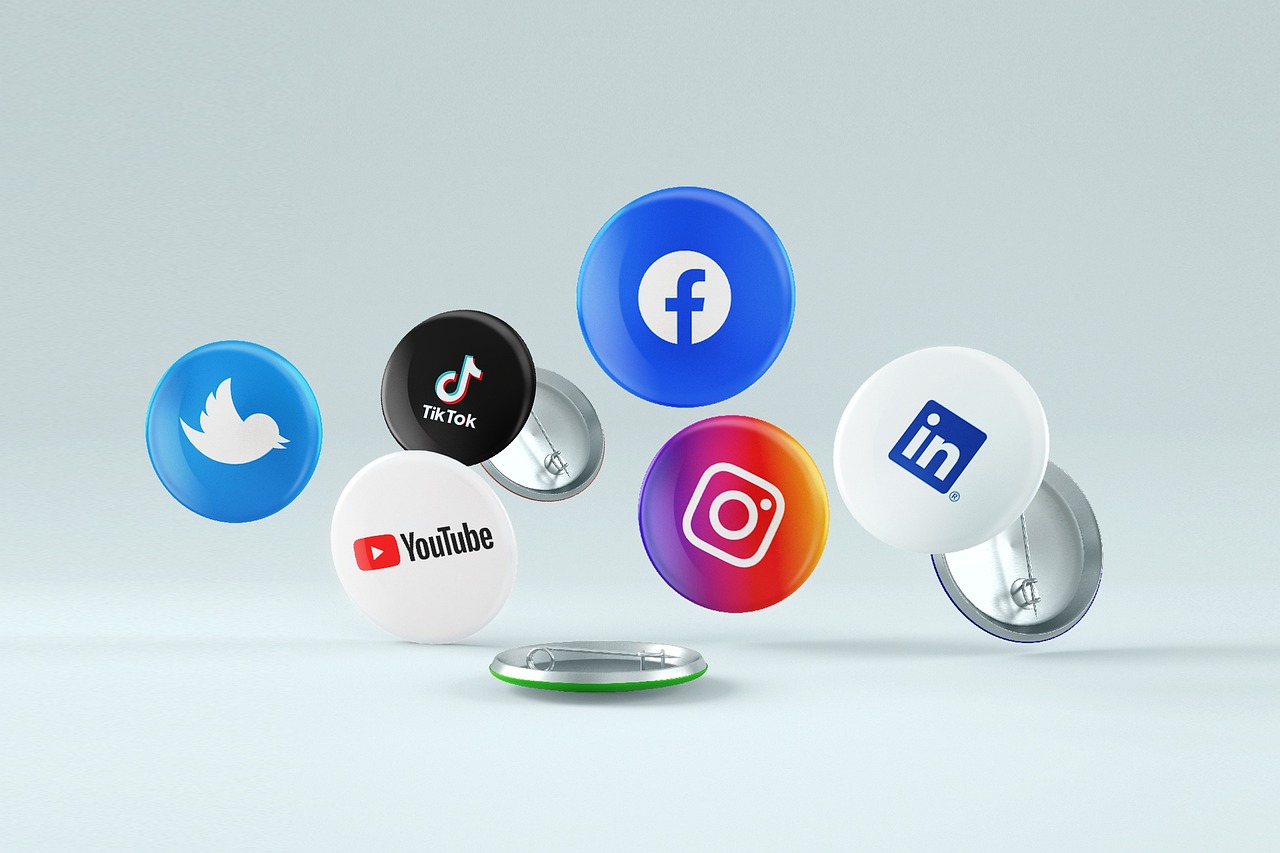In today’s fast-changing business world, you need a strategic marketing plan to grow your small business. But how do you create a plan that will help you succeed? What should you track to see how well you’re doing? And how can you ensure your marketing is up-to-date and meets the needs of your customers in 2023 and beyond?

In this guide, we’ll answer all your questions and give you practical tips and real-world examples to help you master strategic marketing.
Table of Contents
- Introduction
- How to Develop a Strategic Marketing Plan for Long-Term Growth
- Setting Clear Goals
- Understanding Your Target Audience
- Competitive Analysis
- Choosing the Right Marketing Channels
- Strategic Marketing Metrics for Long-Term Growth
- Key Performance Indicators (KPIs)
- Return on Investment (ROI)
- Strategic Marketing Trends for 2023 and Beyond
- The Rise of Customer-Centricity
- Personalization and Customization
- Data-Driven Decision Making
- How to Use Data to Drive Strategic Marketing Decisions
- Building a Customer-Centric Strategic Marketing Strategy
- Aligning Your Sales and Marketing Teams for Long-Term Growth
- How to Use Digital Marketing to Drive Strategic Business Goals
- Content Marketing Strategies for Long-Term Growth
- How to Measure the ROI of Your Strategic Marketing Efforts
- Strategic Marketing Case Studies for Long-Term Growth
- FAQ Section
- Conclusion
Introduction

Imagine your business as a ship sailing the vast ocean of the market. To reach your destination of long-term growth, you want a properly charted course. That’s what strategic advertising is all about – developing a clear approach and making the right choices so that your small business enterprise no longer survives but thrives. This guide will break down the process into easy-to-understand steps and provide practical insights to help your business succeed.
How to Develop a Strategic Marketing Plan for Long-Term Growth
Setting Clear Goals
Just like a ship needs a destination, your business needs clear goals. These goals should be specific, measurable, achievable, relevant, and time-bound (SMART). For example, setting a goal to increase your online sales by 20% in the next year is a SMART goal. This goal provides direction and allows you to measure your progress.

Understanding Your Target Audience
Knowing your customers is vital. It’s like knowing the waters you’re navigating. Use market research to understand their needs, preferences, and pain points. Create detailed buyer personas to guide your marketing efforts. For instance, if you run a bakery, knowing that your customers prefer gluten-free options and morning delivery can shape your marketing strategy.
Competitive Analysis
In the vast ocean of business, there are competitors sailing alongside you. Analyze what your competitors are doing right and wrong. Identify gaps in the market you can fill or areas where you can outperform your competitors. This analysis is akin to knowing your competition’s strengths and weaknesses.
Choosing the Right Marketing Channels
Selecting the right marketing channels is like choosing the most favorable wind to sail. Consider your target audience and where they spend their time. Are they on social media, searching on Google, or reading industry publications? Tailor your strategy to reach them effectively.
Strategic Marketing Metrics for Long-Term Growth
Key Performance Indicators (KPIs)
KPIs are like the compass of your ship. They guide your marketing strategy by measuring performance. Examples of KPIs include website traffic, conversion rates, and customer retention. By tracking these metrics, you can adjust your strategy to stay on course toward your long-term growth goals.

Return on Investment (ROI)
ROI measures the profitability of your marketing efforts. Just like a ship owner evaluates the return on their investment, you should assess how much revenue you generate from your marketing spend. For instance, if you invest $1,000 in a digital advertising campaign and generate $5,000 in revenue, your ROI is 400%.
Strategic Marketing Trends for 2023 and Beyond
The Rise of Customer-Centricity
In 2023 and beyond, customer-centricity is a North Star for businesses. Customers are at the center of every decision. For example, Amazon, with its personalized product recommendations and fast delivery, is an excellent example of a customer-centric approach.

Personalization and Customization
Personalization is the art of making your customers feel unique. Just as a tailor creates custom clothing, personalized marketing offers tailored experiences. Netflix’s content recommendations and Spotify’s personalized playlists are great examples of this trend.
Data-Driven Decision Making
Data is the wind in your sails. It propels you forward. Analyze data to make informed decisions. For instance, e-commerce companies like Shopify use data to optimize user experiences and recommend products based on previous purchases.
How to Use Data to Drive Strategic Marketing Decisions

Data is your GPS in the business world. Collect and examine statistics to recognize customer behavior, marketplace traits, and the overall performance of your advertising and marketing campaigns. Tools like Google Analytics, Facebook Insights, and electronic mail advertising analytics can offer treasured insights to influence your advertising on the right path.
Building a Customer-Centric Strategic Marketing Strategy
Creating a purchaser-centric approach involves being attentive to your clients, addressing their desires, and building loyalty. Zappos, an online shoe and clothing store, is famous for its remarkable customer support and returns coverage, which puts the consumer first.
Aligning Your Sales and Marketing Teams for Long-Term Growth
Just as a ship’s crew must work together, your sales and marketing teams need to collaborate. Clear communication and shared goals can ensure a seamless journey toward long-term growth. HubSpot, a customer relationship management (CRM) platform, exemplifies how aligning sales and marketing can improve efficiency and effectiveness.
How to Use Digital Marketing to Drive Strategic Business Goals

Digital advertising and marketing are just like the engine of your ship, propelling it forward. Utilize various virtual advertising channels, which include social media, e-mail advertising, and content material advertising, to attain your audience efficaciously. Airbnb’s use of social media and person-generated content is a testimony to the strength of virtual advertising.
Content Marketing Strategies for Long-Term Growth

Content marketing is like the rudder that guides your ship. Create valuable content that educates and engages your audience. Red Bull’s content marketing strategy, which includes extreme sports events and media production, has successfully built a brand that goes beyond energy drinks.
How to Measure the ROI of Your Strategic Marketing Efforts

Just as a ship captain evaluates their profits, you should measure the ROI of your marketing efforts. Use tools like Google Ads and Facebook Ads Manager to track and analyze the performance of your advertising campaigns. Make adjustments to improve your ROI and ensure your marketing investments are worthwhile.
Strategic Marketing Case Studies for Long-Term Growth

To illustrate the concepts discussed, let’s take a look at a few real-world case studies that showcase successful strategic marketing initiatives:
Case Study 1: Coca-Cola’s “Share a Coke” Campaign
Coca-Cola’s “Share a Coke” campaign personalized their product labels with people’s names. This creative approach increased customer engagement, social media shares, and ultimately, sales.
Case Study 2: Nike’s “Just Do It” Campaign
Nike’s iconic “Just Do It” slogan embodies a customer-centric philosophy. The campaign motivates individuals to strive for excellence, resonating with customers and driving brand loyalty.
Case Study 3: Starbucks’ Mobile App
Starbucks’ mobile app offers personalized rewards, convenient ordering, and a seamless payment experience. This strategy increased customer retention and sales while enhancing the overall customer experience.
FAQ Section
Now, let’s address some frequently asked questions about strategic marketing:
- What budget should I allocate to marketing?
- Your marketing budget should be a percentage of your revenue, typically ranging from 5% to 15%. However, this can vary depending on your industry and business goals.
- How often should I review my marketing strategy?
- It’s recommended to review your strategy at least quarterly to ensure it aligns with your business objectives and market conditions.
- How can I stay updated on marketing trends?
- Subscribe to industry publications, follow marketing experts on social media, and attend webinars and conferences to stay informed about the latest trends.
- What if my initial marketing strategy doesn’t yield results?
- Don’t be discouraged. Marketing is an iterative process. Analyze what’s not working, make adjustments, and test new strategies until you find what works best for your business.
Conclusion
Strategic marketing is like a compass for your small business. It helps you stay on track and reach your long-term goals. To do this, you need to set clear goals, use data to make informed decisions and keep up with the latest trends.

The business world is constantly changing, so your marketing strategy should change too. Just like a ship adapts to changing weather conditions, your marketing strategy should adapt to evolving market dynamics.
With the right strategy and continuous optimization, your business can sail towards long-term success. Just like the most accomplished captains of the marketing world.









21 comments
I have read some excellent stuff here Definitely value bookmarking for revisiting I wonder how much effort you put to make the sort of excellent informative website
It’s very interesting! If you need help, look here: ARA Agency
Thank you, definitely.
Thank you for your sharing. I am worried that I lack creative ideas. It is your article that makes me full of hope. Thank you. But, I have a question, can you help me?
Thanks for sharing. I read many of your blog posts, cool, your blog is very good.
Hi there from Seo hawk, just became alert to your blog through Google, and found that it is truly informative. I am going to watch out for brussels. I will appreciate if you continue this in future. Numerous people will be benefited from your writing. Cheers from Seo Hawk, India!
Seo experts India think this is one of the most important info for me. And i am glad reading your article. But want to remark on some general things, The web site style is wonderful, the articles is really excellent : D. Good job, cheers from Seo Agency India.
Thanks for sharing. I read many of your blog posts, cool, your blog is very good.
Seo company India liked the valuable info you provide in your articles. I will bookmark your blog and check again here frequently. I’m quite certain I?ll learn a lot of new stuff right here! Good luck for the next!
thanks and you welcome
The website content written in them not only helps in ensuring increased number of customers but also we can target a certain section among them just by adjusting certain parameters of it.
Absolutely! Well-crafted website content is key to attracting more customers and targeting specific segments effectively. By fine-tuning various parameters, we can tailor the content to resonate with distinct audiences, ensuring that our message reaches the right people and drives meaningful engagement.
Only those who are very knowledgeable and the who have gained market expertise are able to control the risks involved & experience a win-win position.
absolutely
What are some common mistakes?
Lack of clear goals and objectives
Ignoring target audience
Insufficient market research
Inconsistent branding
Overreliance on short-term tactics
Failing to measure and analyze results
Resistance to change
Neglecting customer feedback
Your point of view caught my eye and was very interesting. Thanks.
In the future we’ll get back there!
However where are you from?
Thank you for the good writeup. It in fact was once a leisure account it.
Look advanced to more added agreeable from you!
However, how could we keep up a correspondence?
You want to ensure your sales reps are literally calling the contacts you’ve got turned over to them.